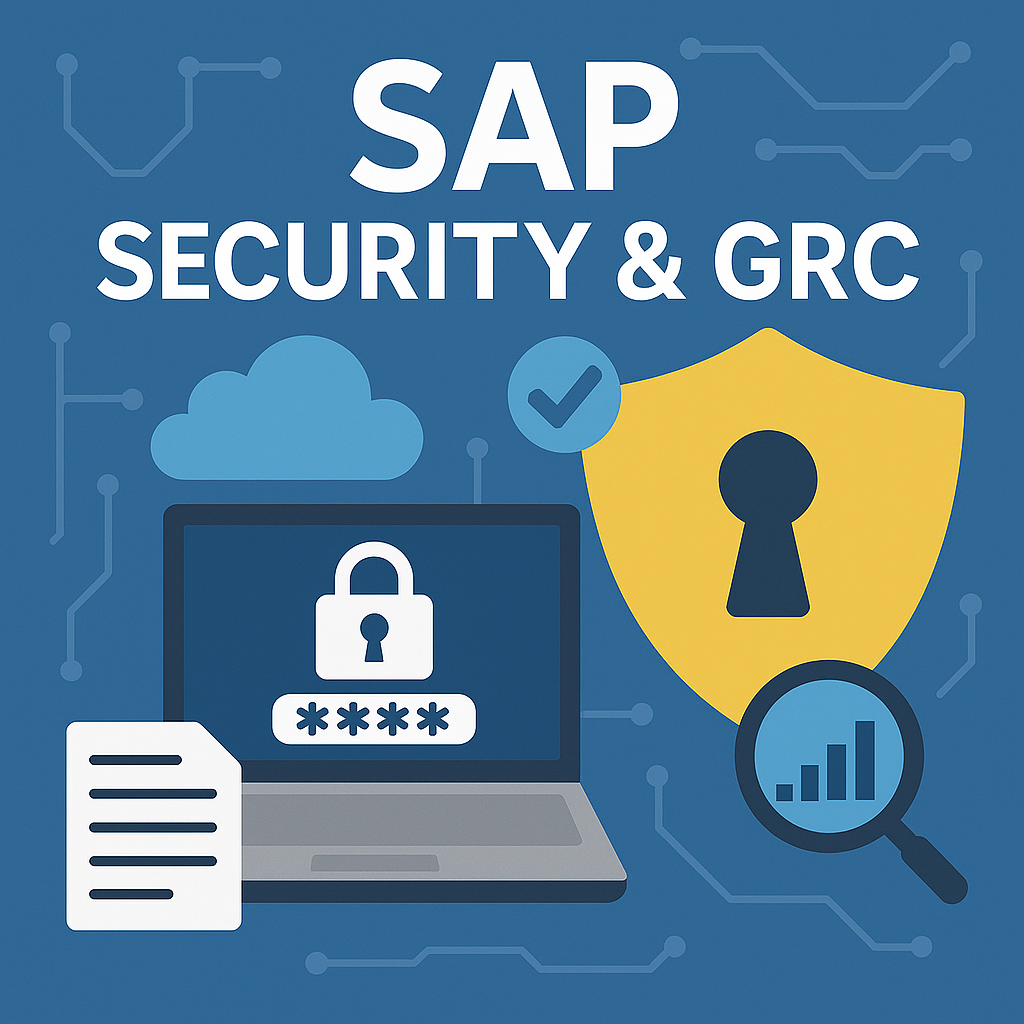
Sap Security & GRC: Audit Challenges & Best Practices
SAP landscapes are only as strong as their security and governance frameworks. From post-go-live surprises to ongoing audit challenges, organisations must proactively manage SAP security, GRC, and compliance to stay protected and audit-ready.
The post-go-live reality: security gaps emerge
The excitement of a successful SAP go-live can quickly give way to the realisation that security configurations and controls may not be as robust as anticipated. Often, security is treated as a “tick-the-box” exercise during the build phase, leaving key gaps in identity and access management, segregation of duties (SoD), and audit readiness.
In fact, it’s common to see post-implementation audits highlight control failures, excessive user access, and inconsistent logging. This is especially true in hybrid environments where cloud-based and on-premise systems must work together securely and compliantly.
Common audit & security challenges in SAP environments
Inadequate role design and SoD conflicts
Poorly defined roles and excessive access rights are among the most frequent audit findings. Without a clear role governance model, users may receive broad access that creates compliance risks and opportunities for fraud.
Lack of continuous monitoring
Many companies rely on manual reviews or outdated tools to monitor user activities. This limits their ability to detect suspicious behaviour in real time and meet audit requirements.
Limited logging & traceability
Incomplete logging configurations and the lack of integration with SIEM tools reduce the organisation’s ability to track who did what and when, a key requirement for both internal and external audits.
Unmanaged emergency access
Firefighter or emergency access accounts are often used without sufficient control or monitoring, leading to significant audit red flags.
Insufficient GRC automation
Organisations that have not invested in GRC solutions or are underutilising their capabilities struggle to manage risk proactively and demonstrate compliance consistently.
Best practices for SAP security & GRC success
Implement a role-based access control (RBAC) model early
Design roles based on business processes, not job titles. Engage both IT and business stakeholders to define clear, risk-aware access structures. Automate SoD analysis during role creation.
Deploy SAP GRC access control tools
Tools like SAP GRC Access Control or SAP Cloud Identity Access Governance (IAG) provide automated workflows for access requests, risk analysis, role provisioning, and SoD checks. These reduce manual errors and improve compliance visibility.
Establish continuous monitoring & analytics
Adopt real-time monitoring tools to detect anomalies and policy violations. Integrate SAP logs with enterprise SIEM solutions for centralised visibility and faster incident response.
Control and monitor emergency access
Use firefighter ID management features within SAP GRC or equivalent tools. Require proper justification, logging, and post-session reviews for every elevated access instance.
Perform periodic user access reviews
Regularly review user access across systems, validate business justification, and remove outdated privileges. Automate these reviews where possible for efficiency and accuracy.
Train and empower your teams
Build cross-functional awareness between security, audit, and business teams. Educate users on security responsibilities and establish accountability for GRC ownership.
Conduct regular internal audits
Don’t wait for an external audit to uncover issues. Periodic internal assessments help maintain compliance, surface gaps early, and prepare the organisation for formal reviews.
A strategic investment, not just a compliance task
SAP security and GRC should be seen not just as a compliance obligation but as a strategic enabler for business integrity and operational excellence. By embedding risk management into the fabric of your SAP environment, you reduce exposure, build trust with stakeholders, and create a resilient digital enterprise.
Whether your organisation is running SAP S/4HANA in the cloud, on-premise, or in a hybrid setup, proactive security and audit readiness are essential. Businesses that invest in robust governance frameworks now are far better positioned to respond to evolving threats, regulatory demands, and business complexity in the future.
